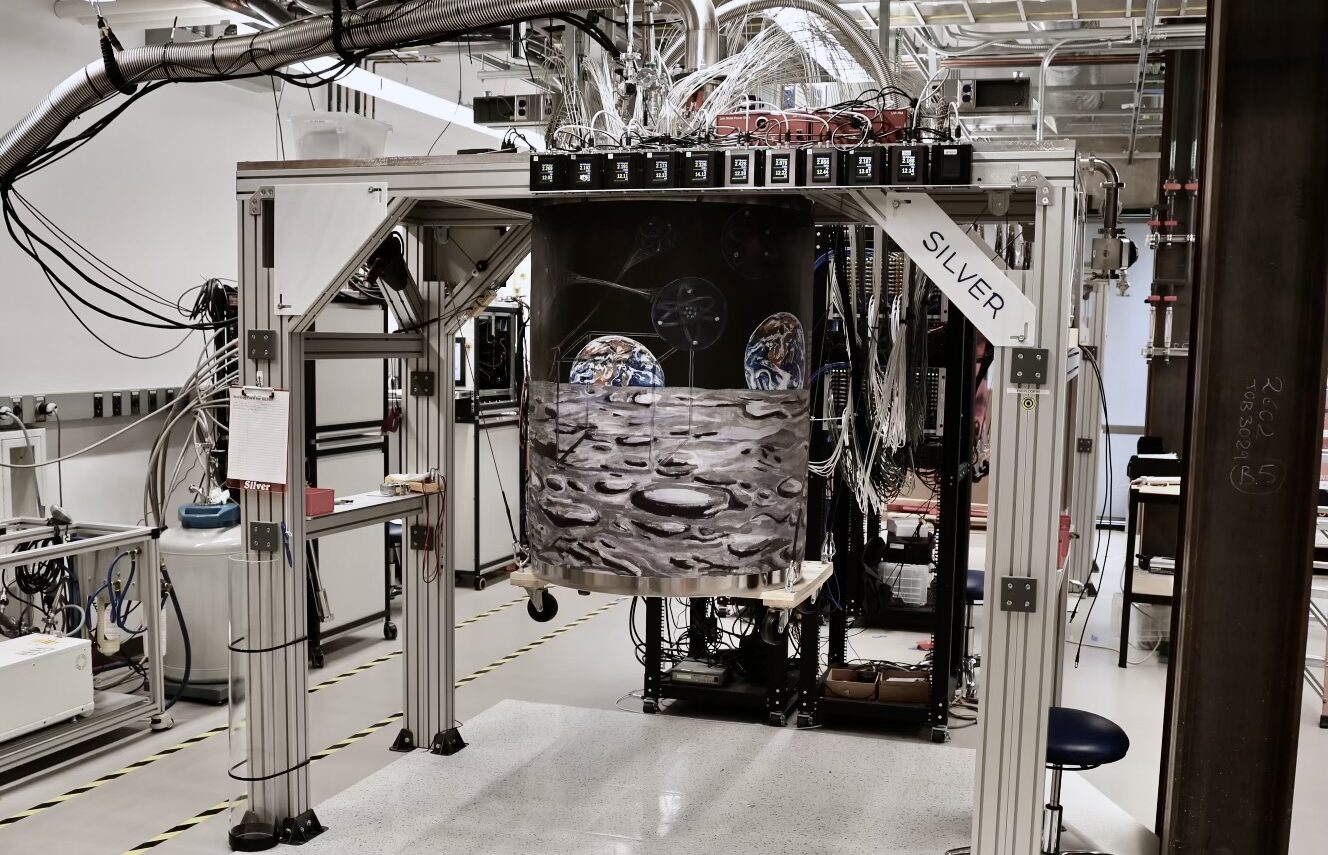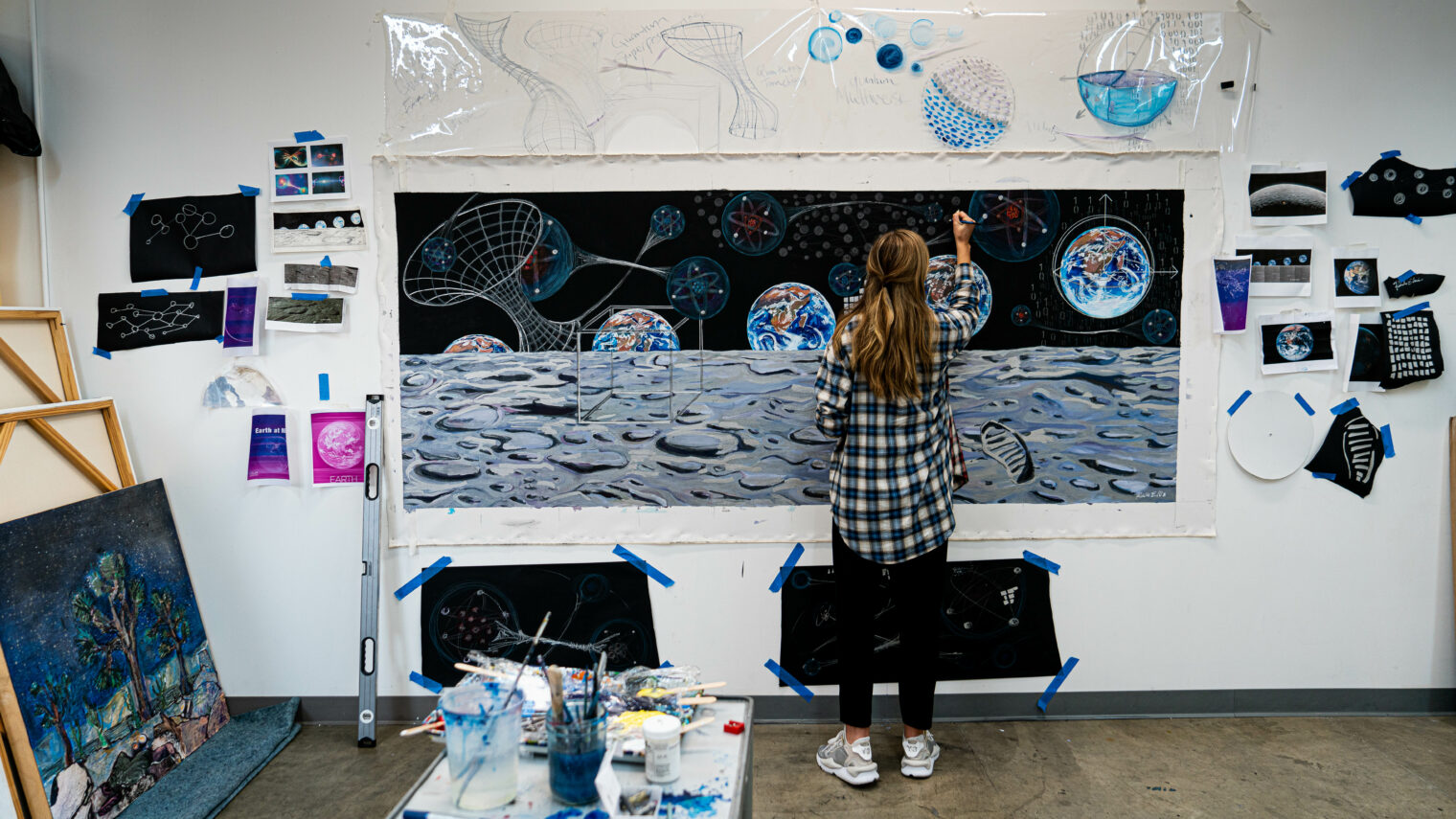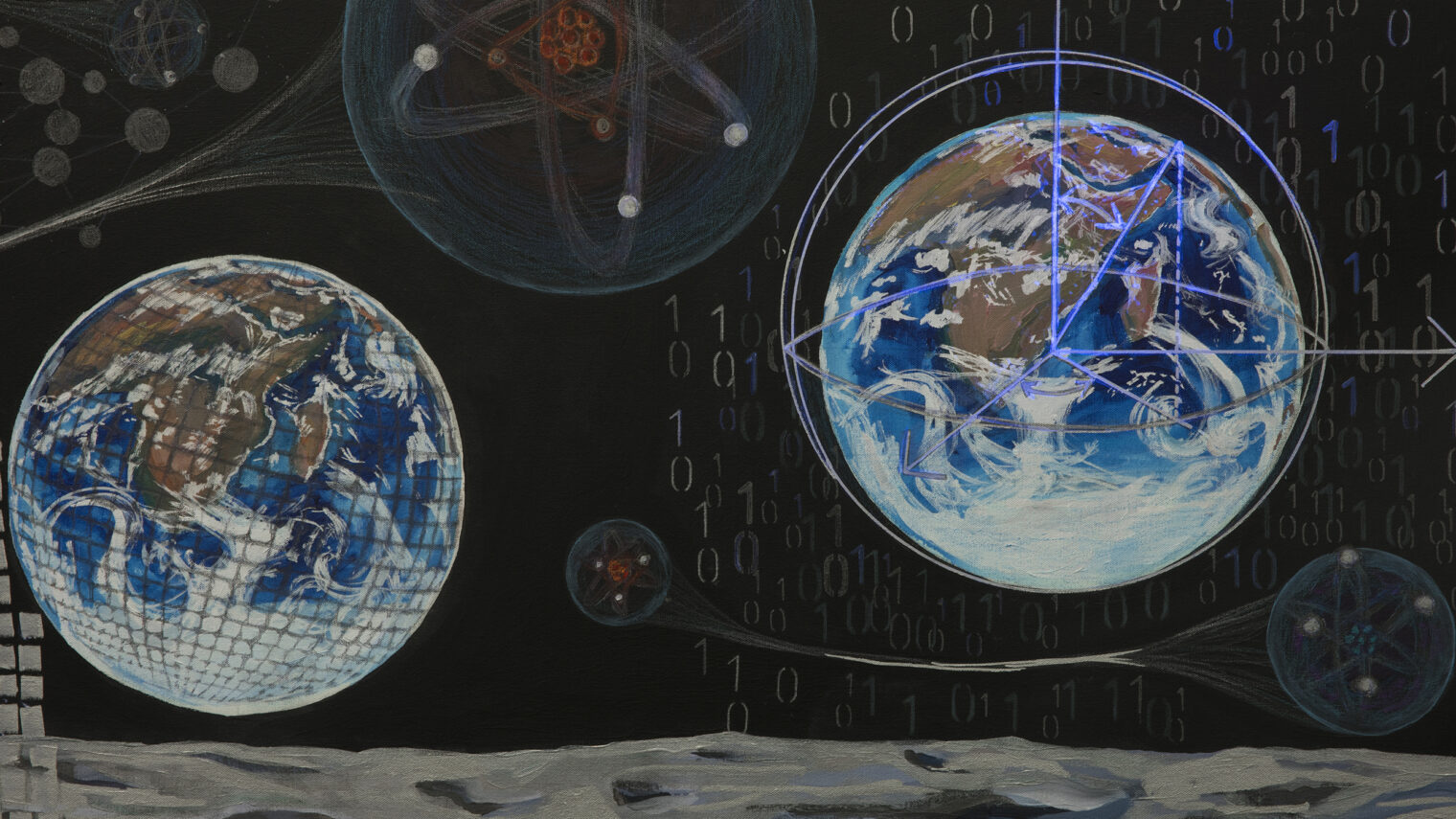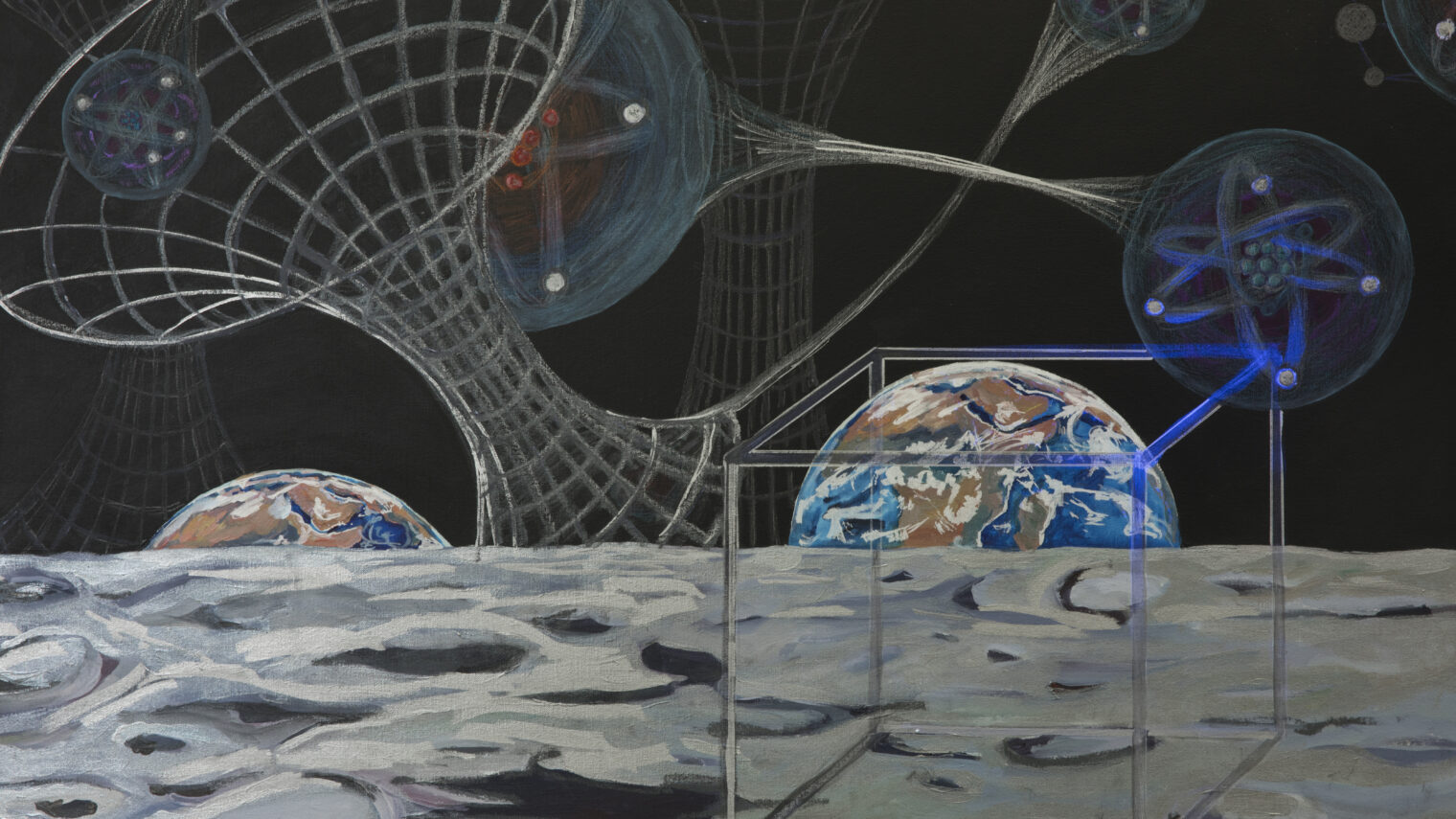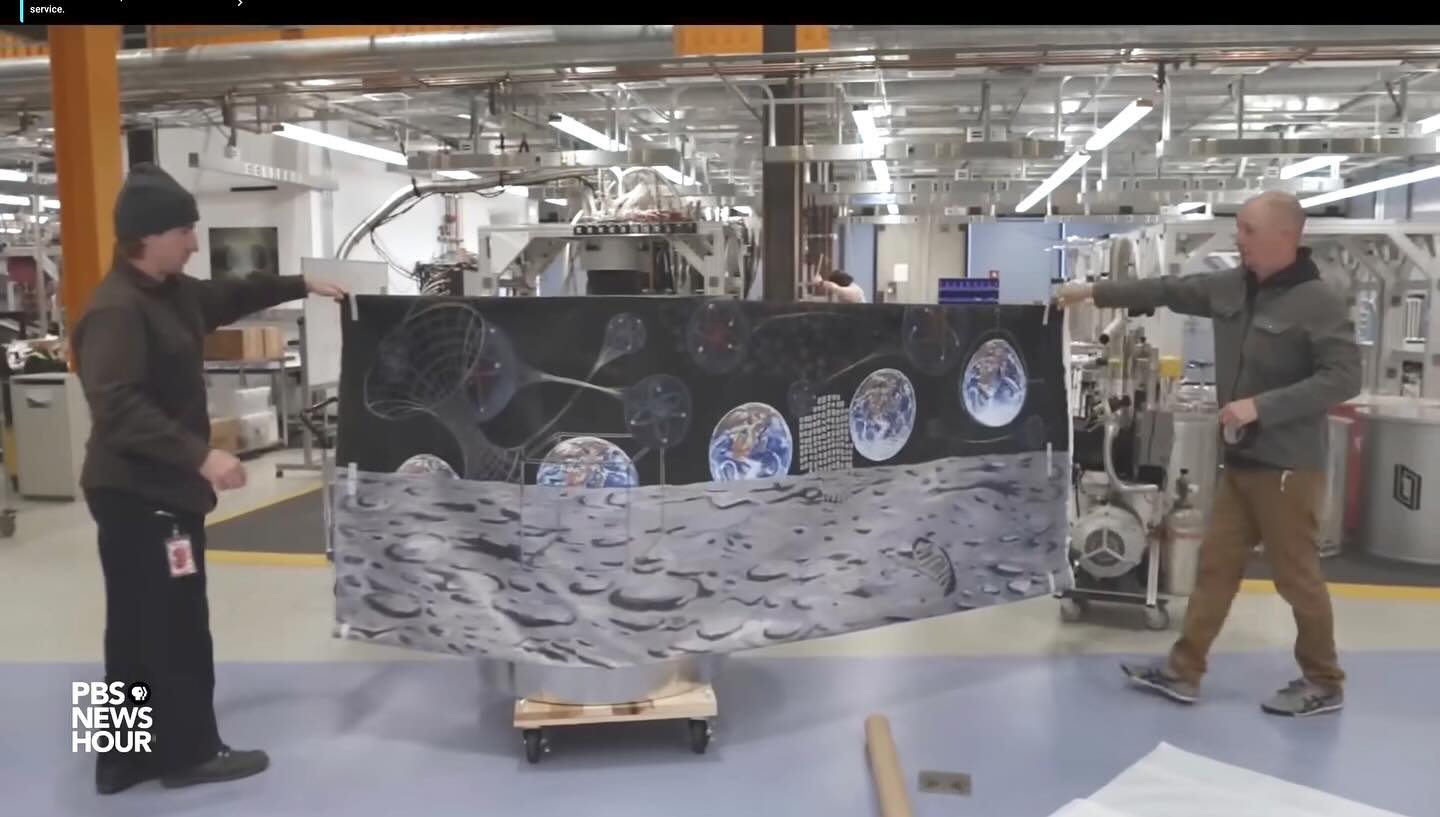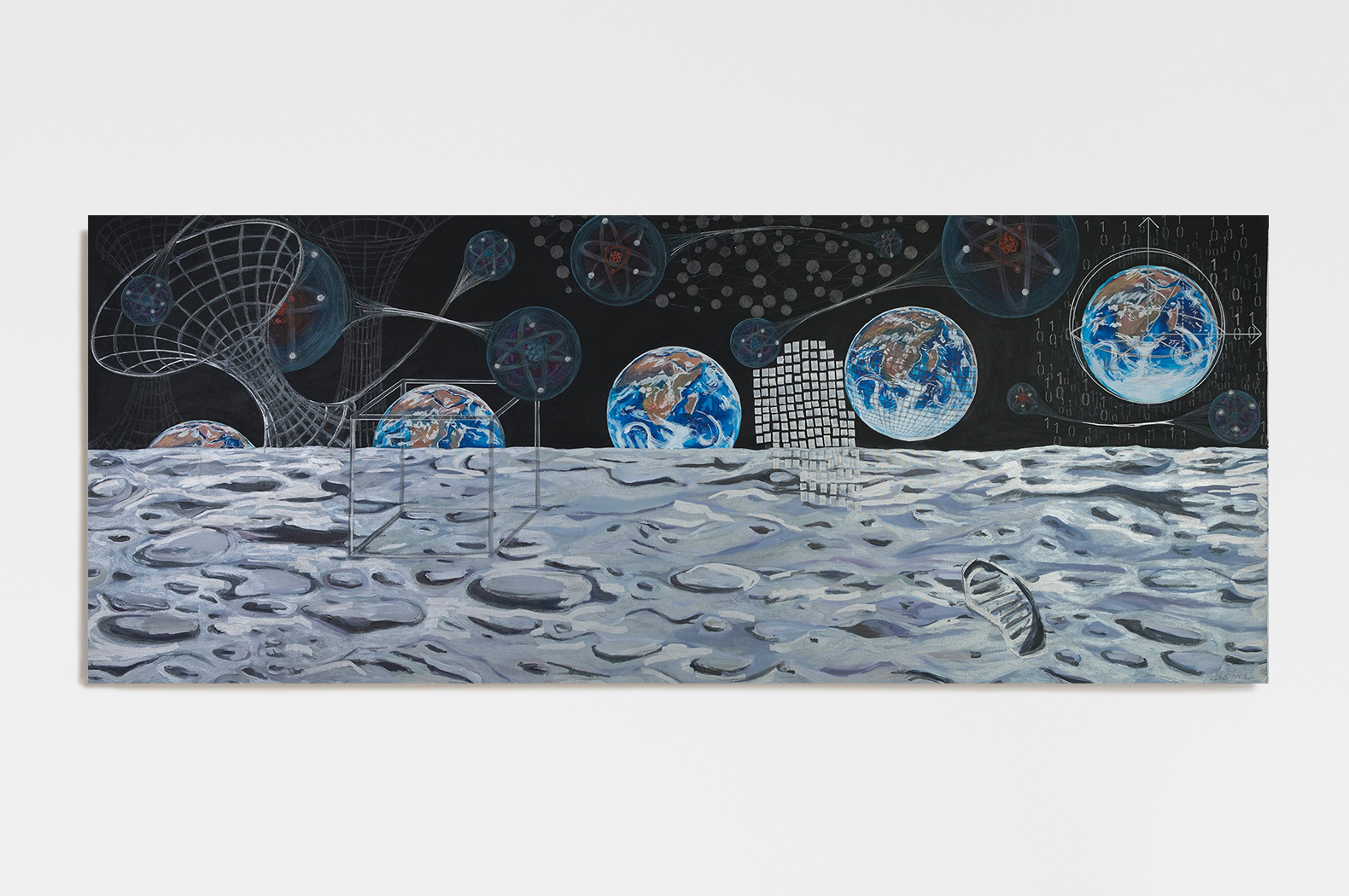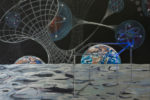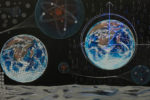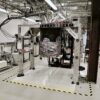“Since this next generation of computing relies more on the nature of physics than mathematical computation, like existing computers, quantum computing's connection with nature became the unifying theme for the art everywhere, from the lobby sculptures of some of the hardware and 3-D installations in the company's cafe to wrapping the quantum computers themselves in art.”
- Mike Cerre, PBS Arts and Culture Series, CANVAS
Google Quantum AI
The Draweverywhere & Quantum AI Artist-in-Residence program is an innovative initiative that bridges the worlds of quantum technology and art, fostering collaboration between scientists and artists on an international scale. As part of this program, sixteen artists from around the world were invited to create unique works that interpret and encapsulate the natural world while wrapping quantum computers in art.
Each quantum computer in the lab undergoes a meticulous process of hand-building and testing, culminating in its final artistic covering once the cryostat—the ultra-cold environment essential for quantum computing—is operational. These cryostats are often named after meaningful locations or natural elements, blending science with a celebration of nature.
Artists in the program approached this challenge in diverse ways, employing a wide range of mediums, including traditional oil paintings, sculptural 3D surfaces, photoreactive designs, and metal-crafted jewelry. Each artwork was designed to fully wrap around the cylindrical cryostat, transforming the quantum computer into a 3D functional sculpture that integrates both aesthetics and scientific utility.
The production process involves several stages, including high-resolution photography of the artwork, digital preparation for printing, and careful fabrication to ensure the pieces fit seamlessly onto the cryostat. This collaboration engages local artisans and craftsmen, from printers to sewing specialists, and culminates in the physical application of the artwork onto the quantum computers by both artists and quantum mechanics.
By integrating art into scientific spaces, the program underscores the importance of preserving our relationship with nature and using technology as a tool to better steward the world we share with all forms of life. While traditional art might typically be displayed flat in galleries, this program redefines exhibition by transforming quantum computers—36 inches in diameter and 44 inches tall—into sculptural canvases, exemplifying a profound intersection of art and science.
